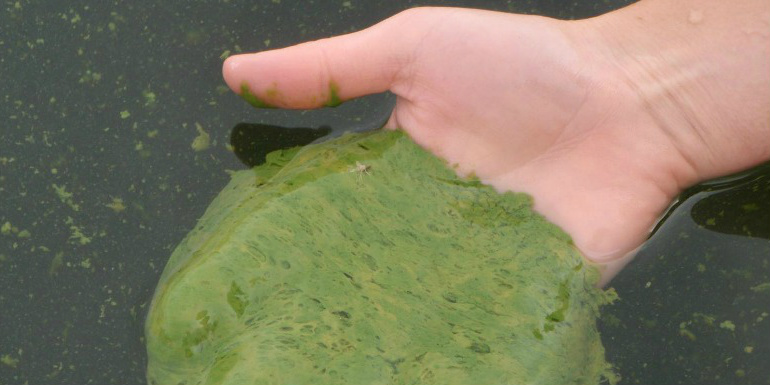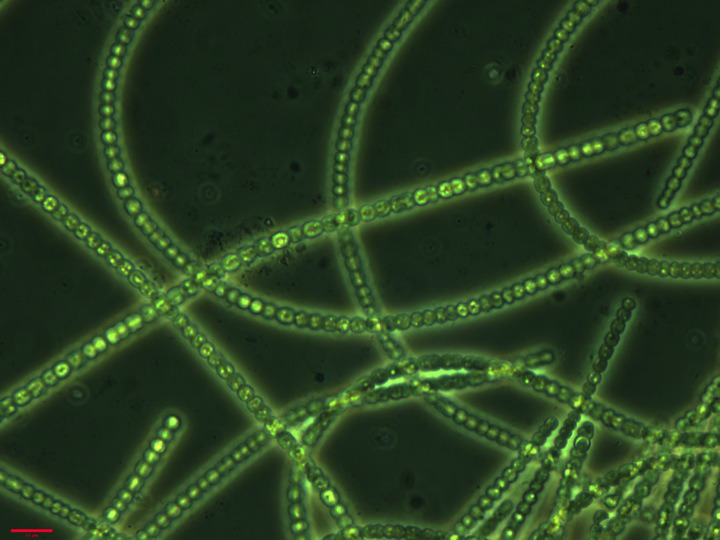
A bloom of blue-green algae on Nakamun Lake in central Alberta, 2016. This summer was a comparatively quiet year for blue-green algae-but experts warn the problem isn't going away.
Many Albertan lakes experienced a summer's reprieve from major blue-green algal blooms this year, according to University of Alberta biologist Rolf Vinebrooke. Many lakes avoided the blooms altogether, while some experienced much smaller blooms than usual. But despite the quiet summer in 2018, the toxic algae are here to stay.
"The occurrence of blue-green algal blooms on lakes in Alberta this summer was the least since 2012," said Vinebrooke, a professor in the Department of Biological Sciences who has been studying the problem for the last six years. "Blooms were less severe when they occurred at all, and they also tended to occur later in the summer than they have in the past."
This year's reprieve is thanks to a cold snap early in the spring, resulting in a late ice off. The algal growing season was also truncated by another cold snap in mid-September.
Other lakes were not so lucky, however. Some, like Hubbles Lake in Parkland County, experienced their first-ever algal bloom this summer.
"Hubbles is a special lake with unusually clear water," said Vinebrooke. "It has a cold bottom layer that very rarely mixes up with the top layer. Much like if you pour cold cream into the bottom of a mug and pour hot coffee on top, the two layers do not mix. Unless, of course, the temperature difference between the two layers is reduced. If that happens, the nutrients at the bottom of the lake are more likely to mix, feeding the blue-green algae."
Rising temperatures
In any case, Vinebrooke explained, climate change is likely the culprit for the blooms. As global temperatures rise and extreme weather events become more common, blue-green algae are likely to flourish.
"Lakes with higher temperatures tend to provide a better home to blue-green algae. Warming also increases the circulation of nutrients within lakes," said Vinebrooke. "If you give blue-green algae warmer and warmer temperatures and more nutrients, they will grow. The future doesn't look good."Studying blue-green algae is important not just because it is a nuisance for lake-goers and fisherman. The algae also produce liver and neurological toxins that can affect humans, pets, and other animals. "Exposure to these toxins relies on a high consumption of water, either directly or indirectly. "Blue-green algae produce various other toxins that can create skin rashes and nausea," explained Vinebrooke.
Further, blooms can result in biological dead zones as they eventually decay, and thereby, deplete oxygen to critically low levels in lakes.
Learn more about Vinebrooke's research. For more information about blue-green algae, related health advisories, or to report an algal bloom, visit the Alberta Health Services website.
